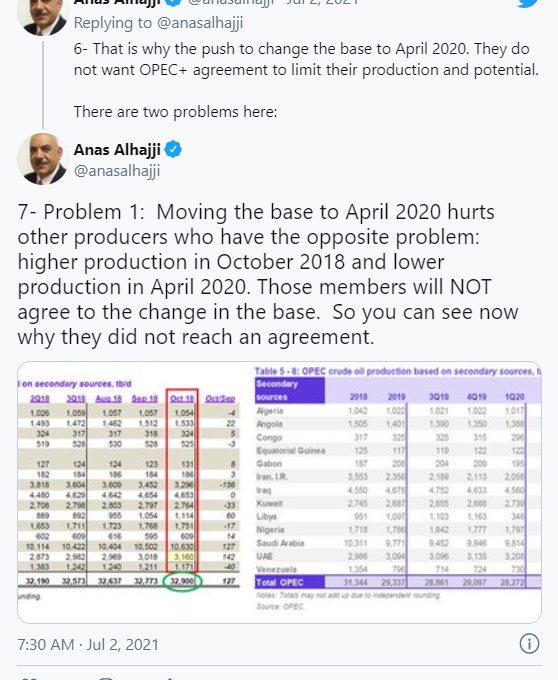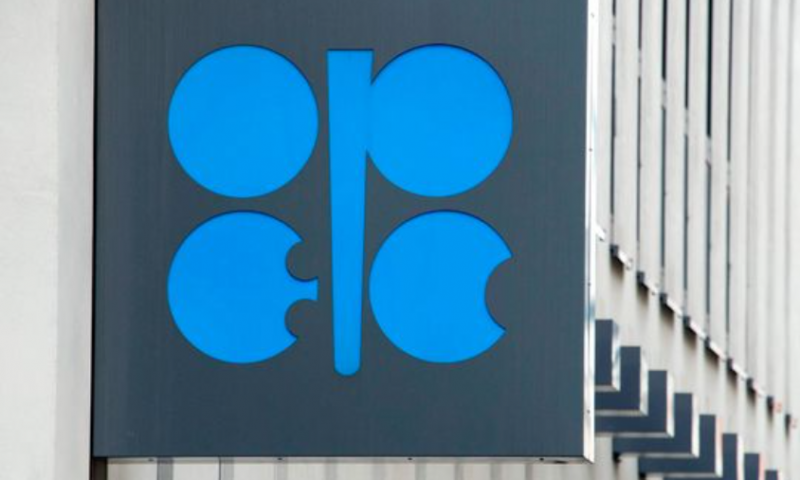U.A.E. wants to pump more, putting it in conflict with Saudi Arabia
Never underestimate OPEC’s reserves of last-minute drama.
The Organization of the Petroleum Exporting Countries and its allies, including Russia, had appeared on track Thursday to approve a proposal that would further ease existing crude oil output curbs by an additional 400,000 barrels a day each month from August through December — adding another 2 million barrels a day of production by the end of the year.
But the plan was thrown into disarray, news reports said, after the United Arab Emirates raised objections during a meeting of the OPEC+ advisory panel on Thursday. The panel met again Friday, with the postponed meeting of OPEC+ ministers set to follow, but the outlook is unclear.
Here’s a breakdown of what went haywire and what it might mean for oil prices:
What is U.A.E.’s objection?
According to news reports and analysts, the U.A.E. doesn’t have a problem with a further relaxation of production curbs through the end of the year. Instead, it believes it should be allowed to pump more than it’s allowed under the revised agreement on output cuts that OPEC+ approved in April 2020.
That agreement saw individual countries cut output from their October 2018 production levels. U.A.E, wants to change the baseline from October 2018 to April 2020. That would allow U.A.E. to pump significantly more oil, as its production in April 2020 stood at 3.841 million barrels a day versus 3.16 million barrels a day in October 2018.
How do other OPEC+ members feel?
The dispute marks what appears to be a deep-seated and fundamental difference between U.A.E. and Saudi Arabia, OPEC’s de facto leader, said Helima Croft, head of global commodity strategy at RBC Capital Markets, in a note late Thursday.
It isn’t the first time the two OPEC producers have been in conflict, she noted, while also observing that the launch of U.A.E.’s Murban crude-oil benchmark has led to questions about country’s commitment to remaining in the group and idling its expensive spare capacity.
Meanwhile, a shift in the baseline faces resistance from producers who, unlike U.A.E., saw their output fall between October 2018 and April 2020, explained independent oil analyst Anas Alhajjji, in a Twitter thread:

Another problem, he explained, is that changing the baseline would create confusion in the market and “nullify the objectives of creating stability and clarity in the market,” which explains why Saudi Arabia and Russia opposed the U.A.E.
How will the conflict be resolved?
It remained unclear whether a deal could be reached. Market rumors held that U.A.E. had proposed holding production levels unchanged in August, setting the stage for another meeting in September that would aim to resolve the deadlock.
The prospect of a no-deal scenario could prompt movement, some analysts said.
RBC’s Croft expects the issue to get resolved, “potentially at the top of the house in Riyadh and Abu Dhabi — and that a modest increase will be announced” Friday.
“That said, we cannot entirely rule out a no-deal scenario, which in turn begs the question about the likely aftermath of such a failure to launch situation,” she wrote.
What does it all mean for oil prices?
Oil prices softened Friday as traders awaited developments. The proposal to lift output by an additional 4 million barrels a day through the end of 2021 had been viewed as relatively bullish, given projections for demand to grow by around 6 million barrels a day over the same period.
On Friday, the U.S. benchmark, West Texas Intermediate crude for August delivery CL00, -0.04% CLQ21, -0.04%, was down 29 cents, or 0.4%, at $74.94 a barrel on the New York Mercantile Exchange. September Brent crude BRN00, 0.34% BRNU21, 0.34%, the global benchmark, was off 2 cents at $75.82 a barrel on ICE Futures Europe.
The popular Energy Select Sector SPDR ETF XLE, -0.34% was off 0.7%. The broader stock market was pushign higher, with the Dow Jones Industrial Average DJIA, 0.43% up around 105 points, or 0.3%, while the S&P 500 SPX, 0.61% and the Nasdaq Composite COMP, 0.63%, each up 0.5%, pushed further into record territory.
Oil had jumped Thursday, with WTI topping $76 a barrel for the first time since October 2018, in anticipation of a deal. Oil held gains Thursay as talks stalled, raising the possibility that an impasse would result in no further easing of curbs through the end of the year.
A simple rollover of the existing agreement, which would see existing cuts of 5.8 million barrels a day remain in place until 2022, could act as a “price accelerator,” particularly with the return of Iranian production now appearing likely to be delayed due to roadblocks in talks aimed at restoring the 2015 nuclear agreement and lifting U.S. sanctions on the country’s crude exports, Croft said.
But that’s no sure thing, she cautioned, noting the potential for a no-deal scenario to create chaos.
“With substantial OPEC+ production currently sitting on the sidelines in an official cut, a disorderly return of that output could upend the oil price rally, especially with concerns about COVID variants ever present,” Croft wrote.

